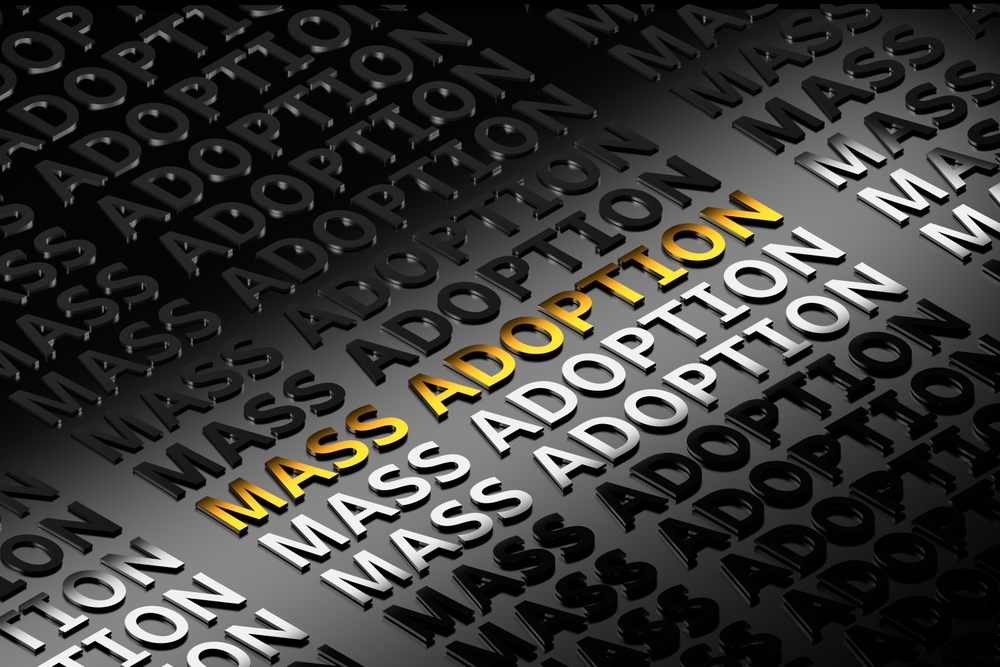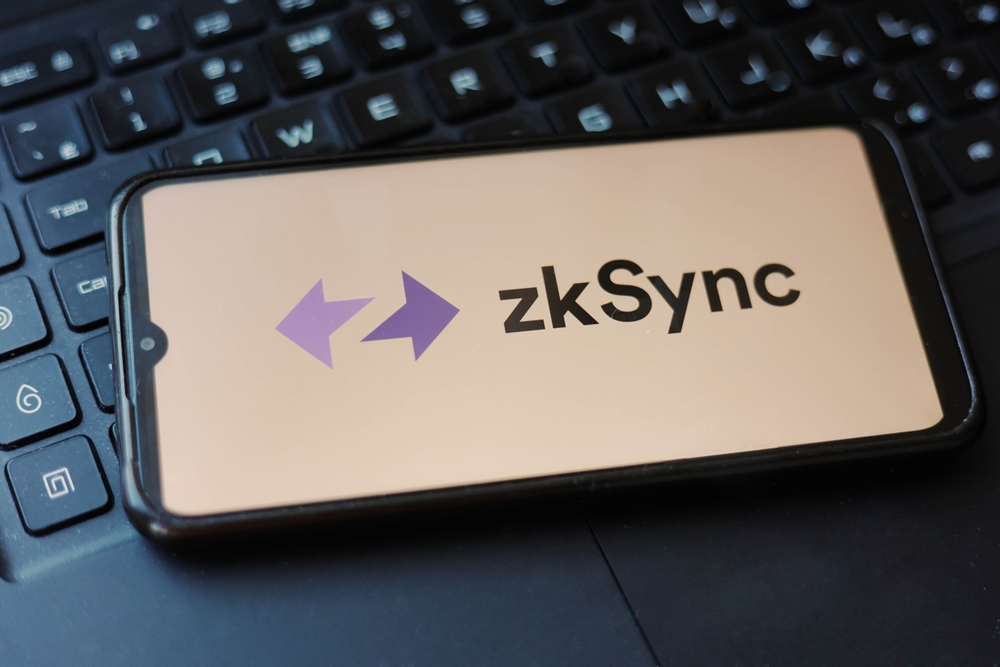Modular Blockchains: Your Key to Scalable Crypto

Ever wondered why your blockchain transactions feel like waiting in line at a sold-out concert, with fees that can leave your wallet gasping for air? It’s a nightmare we’ve all faced—overloaded networks, skyrocketing costs, and missed opportunities for crypto to truly reach its global potential. The promise of a decentralized future can’t survive if blockchains choke every time more people show up. But here’s the game-changer: modular blockchains. This isn’t just another tweak; it’s a complete redesign built to crush scaling issues. By splitting tasks into specialized layers, the whole system runs faster, smoother, and stronger—no more roadblocks, just real solutions.
Why scalability is a headache for crypto

Scalability—or the lack of it—has been a major problem for blockchain platforms. Here’s why it’s such a big deal:
- Network overloading: When too many people use a blockchain simultaneously, it gets crowded. Think Bitcoin during price surges—transactions take forever, and fees skyrocket.
- High costs: Ethereum’s infamous gas fees during NFT booms and DeFi spikes highlight how expensive scaling issues can get.
- Missed potential: Blockchains are supposed to support global adoption. But slow transactions and high fees make them impractical for many industries.
It’s clear that to conquer this challenge, we need something smarter and more efficient. And that’s exactly where modular blockchains come in.
How modular blockchains promise a fix
Imagine breaking down a massive, complex task into smaller, simpler ones. That’s essentially what modular blockchains do. Instead of bundling everything into one system (like traditional blockchains), modular blockchains split tasks into specialized layers. Each layer focuses on a specific job, which means the network becomes faster and far more efficient.
For example:
- One layer might handle transaction execution.
- Another takes care of data storage and management.
- Yet another ensures security and consensus.
By separating responsibilities, these blockchains reduce congestion and make scaling look effortless. It’s like upgrading from a one-man band to a fully organized orchestra, where every instrument plays in harmony.
How this article can help you
If you’re curious about why this modular structure is being hailed as the future of blockchain scalability, you’re in the right place. Whether you’re a blockchain builder, an investor eyeing high-growth projects, or simply someone keeping up with crypto trends, this guide will show you exactly how modular blockchains are changing the game.
So, why are modular blockchains better, and how do they actually work? Ready to find out? Keep reading—you won’t want to miss this.
What is a modular blockchain?

Let me make this simple. Imagine a blockchain as a big machine. In the past, this machine had to do everything—from verifying transactions and storing data to securing the network. That’s one big load. Modular blockchains change this by breaking the machine into specialized parts (or modules), each with a specific job. Sounds smart, right? That’s because it is.
Instead of trying to cram every single task into one giant system like before, modular blockchains distribute the workload so everything runs smoothly and more efficiently. It’s like moving from an old-school jack-of-all-trades system to one that’s laser-focused on doing things in the best possible way.
How is it different from monolithic blockchains?
Let’s talk about the old way—monolithic blockchains. These are blockchains where everything happens on one single platform. Think about Bitcoin or Ethereum in its classic form. They handle everything from validation to execution to data storage in one place. Sounds convenient, right? Maybe, but it comes with major issues when the network gets flooded with activity.
For example, remember when Ethereum gas fees skyrocketed because everyone wanted to mint NFTs or rush into DeFi projects? That’s what happens when you put all tasks on one system—it starts to choke under pressure. This one-size-fits-all approach is like trying to use a backpack for a road trip when you really need a full suitcase.
By breaking roles into different modules, modular blockchains remove this burden. Each module has its job, so congestion isn’t piling up on one system. If you’re wondering why this isn’t how all blockchains work already, well, that’s because innovation takes time—and the crypto industry is just figuring out how to make this the new standard.
Why is this structure better?
Great question. The modular structure isn’t just “different” from monolithic chains. It’s better in a way that actually fixes the core issues. By spreading out tasks like transaction processing, data storage, or security onto separate modules, modular blockchains can handle more transactions without breaking a sweat.
Here’s the magic. This structure means you can have the best of both worlds: better scalability, robust security, and maintained decentralization. Usually, improving one of these areas means sacrificing another. Modular blockchains break this trade-off. It’s like having the speed of a sports car with the safety of an SUV—and still being eco-friendly. Pretty wild, right?
Examples of modular blockchain setups
Alright, the theory sounds great, but does it actually work? You bet it does. Modular blockchain setups are already being used in some groundbreaking projects.
- Rollups: Rollups, often paired with Ethereum, are a classic example. They take transaction processing off the main blockchain (Layer 1), roll them up into batches, and sync them back. This makes Ethereum way faster and cheaper to use without sacrificing security.
- Avalanche Subnets: Avalanche takes things further with its custom subnets. These are separate chains designed for specific tasks—like running a DeFi platform or gaming application. Developers love this customizable solution.
- The Future is Now: Many newer projects are fully adopting modular systems from the start. Whether it’s zkRollups for privacy or data availability layers like Celestia, they’re reshaping the blockchain landscape.
As Vitalik Buterin famously said,
“The future will not be monolithic.”
He was hinting at exactly this shift to modular systems. It’s already happening in plain sight, and if you understand what modular set-ups are capable of, you’ll see how they’re paving the way for limitless blockchain innovation.
But now you might be wondering—why is this shift happening? Why is scalability such an urgent focus right now? Let’s explore what’s driving this evolution, and how it ties into the growing demand for blockchain solutions…
Why Scalability Matters Now More Than Ever

Let’s face it – blockchain technology is evolving fast, and its potential is staggering. But with this rapid growth comes major challenges, and scalability is sitting right at the top of that list. Why? Because blockchains aren’t just about payments anymore. DeFi, NFTs, gaming, supply chains, Web3 apps—you name it—are all demanding faster, more efficient networks.
Here’s the reality: we’re at a tipping point. If blockchain networks can’t keep up, the very innovations driving this space might grind to a halt. Let’s break this down to see why scalability is the heart of the matter today.
The Rise of Transaction-Heavy Apps
Think about how far blockchain applications have come in the last few years. It’s not just about holding cryptocurrency anymore. We’ve got decentralized finance platforms locking billions of dollars in assets. NFTs are taking digital art and gaming to a whole new level. And then there’s the growing field of Web3 games attracting millions of users.
Now imagine hosting thousands of transactions per second (TPS) for these platforms. Can you picture Ethereum or Bitcoin’s old-school architecture handling this load without breaking a sweat? Yeah, not a chance. It’s like trying to run your favorite multiplayer game on a dial-up internet connection—it’s frustrating and, frankly, unsustainable for growth.
The User Experience Under Stress
Here’s where things get real. When blockchain networks get congested, everyone feels it. Let’s take Ethereum in its busiest times as an example—sky-high gas fees, slow transaction speeds, and painful delays. For someone trying to mint an NFT or close a time-sensitive DeFi trade, it’s nothing short of a nightmare.
And we’re not just talking about a technical inconvenience; these issues straight-up affect adoption. Users understandably get fed up and walk away. That funky Web3 social app or the next big blockchain game? They’re left hanging because the infrastructure can’t keep up.
“A poor user experience can kill even the best ideas.” – Unknown
That’s the painful reality scalability issues bring to the table. The potential of blockchain tech is endless, but not if users can’t rely on a fast and seamless experience.
Modular Blockchains to the Rescue
So, what’s the fix? Enter modular blockchains—the superheroes of scalability. Instead of cramming all these complex processes into one monolithic chain, modular systems delegate tasks across specialized layers. What does this mean for scalability? In short: efficiency at scale like never before.
Picture a modular blockchain like a Formula 1 pit crew. Each member has a specific job—changing tires, topping fuel, checking the engine. They operate simultaneously, getting the car back on the road in seconds. Now imagine applying this formula to blockchain transactions. We’re talking about smoother processing, fewer delays, and a system designed to handle the demands of growing apps without breaking a sweat. This is the kind of architecture that could power massive Web3 revolutions, where apps no longer fear demand spikes but welcome them.
But here’s the big question: how does it all actually work behind the scenes? What’s the secret sauce making these layers click together so perfectly? Let’s get into the nuts and bolts next. You’re going to love it.
How do modular blockchains actually work?

Don’t worry—this isn’t rocket science. When people hear “modular blockchains,” they often assume it’s something only developers can understand. But you’ll see, it’s actually pretty simple when you break it down.
Specialized roles for better efficiency
Think of a modular blockchain as a highly organized team. Instead of one system doing everything, it assigns specific tasks to different “specialist” modules. For example:
- Data Availability (DA): This module ensures transaction data is stored and readily available across the network.
- Execution Layers: These handle the actual processing of transactions—where the magic happens.
- Consensus Protocols: This is where the network agrees on what’s true, ensuring the system remains secure and decentralized.
Each module knows its job and does it well, which means the blockchain doesn’t get bogged down trying to handle everything at once. If you’re wondering why this matters, think about your smartphone apps. You wouldn’t want your camera app to manage emails or your social media. Separate tools for separate tasks just make sense.
“Efficiency is doing things right; effectiveness is doing the right things.” – Peter Drucker
And modular blockchains? They nail both.
Handling high transaction loads effortlessly
Here’s where it gets cool. By splitting up the workload, modular blockchains avoid the bottlenecks that plague traditional systems. There’s no more cramming everything into one chain, which means the network stays fast, no matter how busy it gets.
For instance, with modular setups, a high-load event like a minting frenzy for a viral NFT collection wouldn’t choke the system. Instead, the execution layer handles the transactions efficiently, while the data availability module stores and organizes the information—like a pro kitchen staff in full swing during dinner service.
Real-life analogies to understand this better
If that feels too abstract, here’s a better way to picture it: think of a factory assembly line. Imagine if one person had to build an entire car from scratch—it’d be slow, clunky, and error-prone. Now, break that process down into specialized steps. One worker assembles the frame, another handles the engine, and a third installs the interior. Suddenly, production speeds up, and everything runs much smoother.
That’s modular blockchains in a nutshell. Each piece focuses on its role, and when stitched together, they deliver high performance without getting overwhelmed.
Here’s another perspective: A report by Messari noted that Layer 2 rollups (a modular tech used on Ethereum) are already processing thousands of transactions per second. That’s real proof this model works.
Excited yet? It gets even better. Picture what this efficiency unlocks for tons of industries—from Web3 gaming to decentralized finance. But what about the real perks of this setup? Wondering why it’s such a massive breakthrough for developers and businesses alike?
Benefits of Modular Blockchains: A Closer Look

Let’s get down to the exciting part—what makes modular blockchains not just unique, but an absolute game-changer in the crypto world? It’s time to zoom in and see why this technology is becoming the talk of the industry.
Scalable Without Compromise
Here’s the challenge: scalability often forces blockchains to give up decentralization or security. But modular blockchains? They manage to sidestep this and bring you the best of both worlds. By splitting up responsibilities across layers, they handle higher transaction volumes without sacrificing the decentralization that crypto users hold sacred. For example, Ethereum’s rollups, a modular model, have shown the capacity to increase transactions per second while keeping the chain secure.
Think of it as upgrading from a single-lane road to a highway but still keeping all the traffic rules intact. This is a big deal in an industry where performance enhancements used to come at a cost of centralization or vulnerability.
Cost-Effective Solutions for Developers
Let’s be real—developers are the backbone of this entire industry. What modular blockchains do for them is incredible. Instead of building an all-in-one system, developers can focus on their specific needs and create tailored solutions. This approach not only saves time but also significantly reduces costs. When you aren’t trying to reinvent the wheel every time, you’ve got more room for creativity and innovation.
And here’s a tip for perspective: remember how the cloud revolutionized app development by providing pre-built infrastructure? Modular blockchains are doing something similar for crypto builders. The work gets faster, more efficient, and way more scalable with modular setups.
Adaptable for Endless Use Cases
Flexibility is another massive reason modular blockchains are killing it. Industries like gaming, DeFi, and even supply chain management need very specific blockchain functionalities. A one-size-fits-all approach doesn’t work anymore. Modular systems allow developers to tailor blockchain setups to fit pretty much any industry need.
Imagine a Web3 gaming platform needing lightning-fast transactions, or a supply chain system requiring meticulous data handling and transparency. With modular designs, those platforms can easily build the exact system they need without being bogged down by irrelevant features. The gaming platform might focus its modules on speed, while the supply chain project prioritizes data storage and integrity.
“The best solutions are rarely about doing more—they’re about doing the right things better.”
What’s Next?
As modular blockchains continue to evolve, their benefits are becoming crystal clear. But here’s something to think about: what projects are already making the most out of modular setups? Who’s leading this exciting shift, and how are they pulling it off? Stick around—you’re going to want to see these in action.
Exploring Popular Modular Blockchain Projects

When I first discovered the concept of modular blockchains, I couldn’t help but wonder—where is this being used right now? The good news? It’s not some far-off idea anymore. Real projects are already harnessing modular blockchains to solve scalability problems and deliver groundbreaking performance. Let’s take a closer look at a few that are leading the charge.
Ethereum’s Rollups: Breaking Down Workloads
If you’ve been following Ethereum, you’ve probably noticed conversations around its scalability issues. Gas fees shooting through the roof, slow transactions during peak times—it’s been rough. Enter Rollups.
Rollups are Ethereum’s Layer 2 scaling solution. They work by processing transactions off-chain and only posting essential data (or proofs) back to Ethereum’s main chain (Layer 1). This means more transactions get handled at a fraction of the cost and, better yet, much faster. A real-life example? Optimistic Rollups and ZK-Rollups, both of which are already driving massive adoption in decentralized finance (DeFi) and NFT platforms.
“Simplicity is the ultimate sophistication.” – Leonardo da Vinci
Rollups embody this. They simplify Ethereum’s heavy lifting without compromising on security. Think of them as a “lighter and smarter brain” backing Ethereum’s already strong foundation.
Avalanche Subnets: Customization Meets Power
While Ethereum uses Rollups, Avalanche is carving its own path with subnets. Subnets are essentially customizable blockchains within the Avalanche ecosystem. They offer a perfect balance—tailored solutions that still communicate with the main network.
Take gaming as an example. Picture a blockchain built specifically for a high-transaction Web3 game where players buy, sell, and interact non-stop. This is where Avalanche’s subnets shine! A project like Kalao leverages these subnets to ensure seamless performance for its NFT virtual world platform. It’s scalable, reliable, and most importantly, doesn’t clog the entire Avalanche network. Pretty cool, right?
Some Challenges Modular Blockchains Still Face

Let’s be real for a second—while modular blockchains sound like the ultimate solution, they’re not perfect yet. It’s like when you get a shiny new gadget and realize there are still bugs to iron out. So, what are the hurdles standing between modular blockchains and their big promise?
Compatibility Issues
The idea of modularity is great, but making it all work seamlessly across different ecosystems? That’s a whole other ball game. Imagine trying to integrate two puzzle pieces that almost fit but don’t quite snap together. With modular blockchains, ensuring that different layers, projects, or chains communicate effortlessly can get tricky.
One example is Layer 2 rollups working with Ethereum’s Layer 1. While they massively improve transaction speed and reduce costs, synchronizing data perfectly without delays or errors is still an ongoing challenge. And when chains need to cooperate, cross-chain compatibility becomes the elephant in the room.
“The hardest part of innovation isn’t building the tech—it’s making it work in harmony with everything else.”
Imagine the complexity a developer might face when trying to connect a modular chain with a monolithic one, like pairing a futuristic racing car with an old engine. That’s where the frustration often lies.
Testing and Adoption Hurdles
Another big issue: Modular blockchain tech is still new, so it hasn’t been tested enough in the wild. The crypto community has seen its fair share of hyped innovations that faced slower adoption because the tech wasn’t 100% ready yet. Some promising modular setups may still stumble during real-world implementation.
Think of it like beta software—you know it has potential, but glitches make you cautious about fully committing. Builders and developers are the pioneers here, experimenting to figure out what works and what doesn’t. But for businesses and users who want solutions they can trust right now, the wait for a completely polished product can slow things down.
- DeFi platforms, for example, are still largely testing modular setups for scaling.
- Web3 games, which require insane scalability, haven’t yet adopted this tech on a large scale.
Getting the tech set up is only half the job; convincing developers and projects to embrace it is the other battle.
Future Developments Needed
Let’s not forget, modular blockchains are still evolving. Think of them as a work-in-progress masterpiece rather than a finished product. While modularity holds enormous promise, crucial advancements are needed before they reach their full potential.
For example, zk-Rollups (a popular modular scaling tech for Ethereum) are moving at lightning speed in terms of development, but they’re still refining how things like data compression happen. Similarly, there’s a lot of research going into making modular systems faster to sync while staying ultra-secure. Some of the smartest minds in crypto are working on these updates, which shows how massive the potential is.
But here’s a question to keep you thinking: If these challenges are overcome—and let’s be real, they will be—what kind of massive ripple effect could modular blockchains create for the entire blockchain universe?
How Modular Blockchains Could Change the Crypto Game

Imagine a world where blockchain technology powers everything from massive Web3 applications to everyday transactions at blazing fast speeds. No delays, no crazy fees, and no “network congestion” horror stories. Sounds ambitious, right? Well, that’s exactly the kind of future modular blockchains are steering us toward.
Enable massive Web3 adoption
If there’s one thing holding Web3 back from reaching millions—or even billions—of people, it’s scalability. The current infrastructure just isn’t designed to handle the kind of sheer volume that comes with mass participation. Picture what happens when a Web3 game suddenly has a million players trading NFTs or competing in real-time—traditional blockchains would crawl to a halt.
Now, bring modular blockchains into the picture. By breaking down tasks into specialized layers, these systems can scale effortlessly. It’s like upgrading from a single-lane road to a multi-lane highway. Whether it’s decentralized finance projects or gaming ecosystems, the floodgates for innovation and mass adoption can finally open.
Advanced blockchain applications
Beyond handling high transaction volumes, modular blockchains unlock possibilities we couldn’t even dream of before. Think about institutional-grade blockchain uses—like supply chain management or global payment settlements—operating at insane efficiency. These applications demand reliability and speed without compromising security. Modular systems make that a reality.
On top of that, gaming and metaverse platforms are poised to thrive. Players won’t have to wait for laggy transactions to buy rare items or move assets between virtual worlds. Developers can tailor modules specifically for gaming, balancing lightning-fast transactions with robust security. That kind of flexibility is a game-changer—literally.
The road to mainstream crypto adoption
Why hasn’t crypto hit true mainstream adoption yet? One huge reason: everyday digital transactions still feel clunky. High fees, slow confirmation times, and complicated processes have scared off countless potential users. Imagine someone trying to buy a cup of coffee using crypto, only to face a $20 transaction fee. It’s an instant deal-breaker.
With modular blockchains, the smooth, low-cost user experience everyone’s been waiting for is finally within reach. It’s no longer just about hardcore traders and tech-heads; it’s about making blockchain-friendly apps that anyone—yes, even your grandma—can use. This shift could change the public perception of cryptocurrencies altogether.
Already, companies like Coinbase and SubQuery are documenting how modular setups are redefining the blockchain landscape. Even Visa is keeping its eye on this tech. If these giants are taking it seriously, you know it’s not just hype—it’s the future.
Feeling like modular blockchains are the superhero crypto’s been waiting for? Trust me, there’s even more to uncover. What’s on the horizon for blockchain scalability, and which projects are about to blow up? Let’s keep exploring.
Wrapping it all up: Modular blockchains to watch out for

Alright, let’s bring everything together. By now, we’ve explored what makes modular blockchains such a compelling solution for one of crypto’s largest challenges: scalability. But here’s the big question—why should you care, and what’s next for this tech?
Why modular blockchains are your key to scalable crypto
The beauty of modular blockchains lies in their ability to tackle the “blockchain trilemma.” That’s the age-old struggle between scalability, decentralization, and security. Normally, you’d have to sacrifice one to improve the other two. But modular architecture flips the script by separating roles and making scalability feel almost natural without compromising anything else. Honestly, the results are kind of stunning—like Ethereum’s rollups enabling thousands of transactions without breaking a sweat or Avalanche’s subnets designed for high performance in niche use cases.
Think about this: we’re in an era where industries like gaming, DeFi, and even supply chain logistics rely on blockchain. Every second counts. No one’s sticking around for congested systems or wallet-breaking fees. And that’s why modular blockchains are being called a game changer—they ensure smooth user experiences for broader mainstream adoption.
Projects leading the way
If modular blockchains have caught your attention, there are already some heavy-hitters you should check out. Ethereum has been killing it with its rollups—they’re essentially changing how Ethereum scales by pushing high transaction volumes off the main chain while syncing efficiently back to Layer 1. Then, there’s Avalanche and its custom subnets. These are tailored for specific applications, like gaming or financial tools, delivering speed and scalability in ways traditional chains just can’t handle.
You’ve also got projects like Celestia, which is breaking ground by focusing entirely on data availability and serving as a critical foundation for emerging modular designs. And, of course, keep an eye on Polygon’s advancements in modular Layer 2 solutions—they’re making some serious noise as well. The ecosystem is evolving fast, so this is definitely the space to watch if you’re into innovation.
Ready for the shift?
Here’s the reality: whether you’re a developer building the next big app or a trader trying to figure out which ecosystems will dominate, modular blockchains are the future. Slowly but surely, they’re reshaping the crypto landscape. Think about it, when was the last time we had a solution that didn’t force developers or users to compromise? This is big—like “internet in the ’90s” big.
If you’re just starting out in crypto or someone who loves staying ahead of tech trends, now’s the time to dive into modular systems. Read about projects driving the change, test out new Layer 2 solutions yourself, and stay curious. The knowledge could put you miles ahead in your crypto journey.
The bottom line
The future of blockchain scalability is here, and it’s modular. The tech is already proving its potential, and adoption is just getting started. From solving bottlenecks to supporting new industries like Web3 gaming and DeFi, this approach has the power to push crypto into the mainstream like never before. Keep an eye on modular blockchains—they’re not just a fix. They’re the foundation of tomorrow’s decentralized world.
